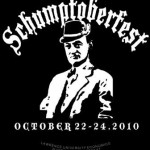 Describe the industrial structure and to evaluate the interrelationships between firm size, market structure, and innovation in your assigned industry. You should address the following questions:
Describe the industrial structure and to evaluate the interrelationships between firm size, market structure, and innovation in your assigned industry. You should address the following questions:
- What are the strengths and weaknesses of using a model of “perfect competition” (many firms, homogenous products, low switching costs, price competition) to characterize the industry?
- What is the “structure” of your industry? Is it dominated by a few firms (concentrated)? Or are there many firms?
- How would you characterize innovation in your industry? Is it particularly dynamic or innovative? Are we observing new products or new processes? Are the firms that come up with the ideas the same as those implementing these ideas?
- Would you say your industry characterized by managerial or entrepreneurial capitalism? That is, how is innovation funded in this industry?
Next, determine where you come down on the “Schumpeter hypothesis” in terms of market structure and innovation. Write down a thesis statement and three supporting points to argue for or against Schumpeterian-type arguments. These might include:
- R&D projects have high fixed costs that can only be covered by industry with robust revenue streams.
- Economies of scale and scope foment innovation.
- Diversified firms are in superior position to identify and exploit unforeseen innovation opportunities.
- Large firms are able to spread the R&D risks across many projects.
- Large firms have more favorable treatment in obtaining external financing.
- Firms with market power make higher profits, and can use retained earnings to finance R&D from own profits.
- Firms with market power have fewer rivals and thus are more able to appropriate returns from innovation, bolstering the incentive to innovate.
We will spend Sunday morning talking about these industries. We will begin by going around and providing a brief description of each industry. After that, each group will state its thesis and then discuss its supporting arguments.
William James Adams, (2006) “Markets: Beer in Germany and the United States,” Journal of Economic Perspectives, 20(1): 189-205
Emek Basker (2007) “The Causes and Consequences of Wal-Mart’s Growth.” Journal of Economic Perspectives, 21(3): 177–198
Kal Raustiala and Christopher Jon Sprigman (2009) “The Piracy Paradox Revisited,” Stanford Law Review, 61(5).